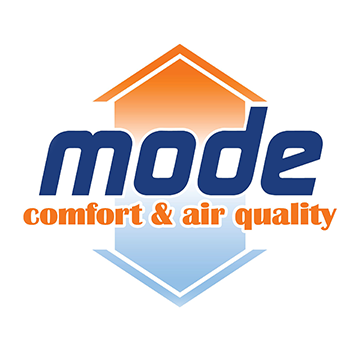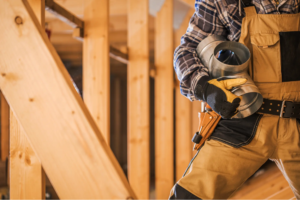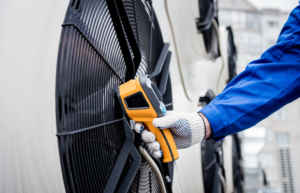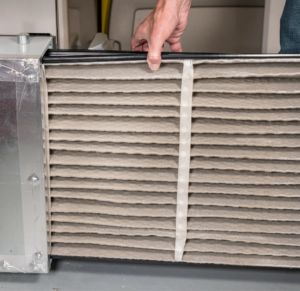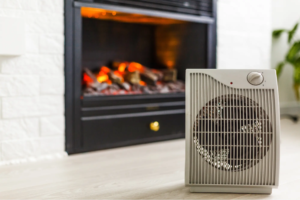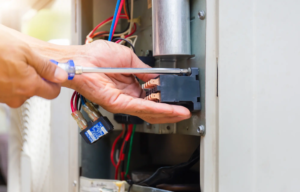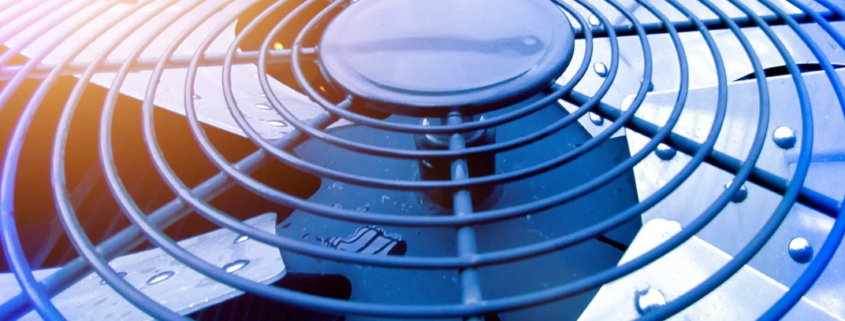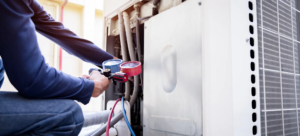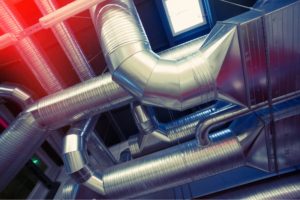Is the thought of having to replace an HVAC system sending shivers down your spine—or worse, leaving you in a cold sweat? Fear not, for taking the leap into updating your heating, ventilation, and air conditioning system doesn’t have to be a daunting endeavor. In fact, with the right guidance, it can be a smooth transition that leaves you with a breath of fresh air, quite literally. Today’s blog post is your golden ticket to understanding when, why, and how to efficiently replace your HVAC system, ensuring your home is the epitome of comfort year-round. So sit back, relax, and let’s dive into the world of HVAC upgrades that will transform the way you live.
How Often Should an HVAC System Be Replaced?
Even the best systems have a finite lifespan. Knowing when it’s time to replace your HVAC is essential to avoid the inconvenience of breakdowns and the costs associated with less efficient, older units.
Typically, HVAC systems have an average lifespan of around 15-25 years, with furnaces lasting about 15-20 years, air conditioners running for approximately 10-15 years, and heat pumps providing service for about 15 years.
If you are experiencing any of the following issues, it may be a sign that your HVAC system needs to be replaced:
- Increased Repair Frequency: If your system requires repairs more often, it could be a sign that it’s nearing the end of its useful life.
- Rising Energy Bills: An increase in your energy costs could be a clue that your HVAC system’s efficiency is declining.
- Inconsistent Temperatures: If your system struggles to maintain the set temperature, it may be losing its effectiveness.
- Strange Noises or Smells: Odd sounds or smells coming from your HVAC system should be inspected as they can indicate serious problems.
If you aren’t sure of when to replace your HVAC unit or are looking for AC repair in Richmond, contact Mode today for assistance.
Which Is the Best Time of Year to Replace Your HVAC System?
Timing your HVAC replacement strategically can save you money, ensure better service, and guarantee a stress-free installation. Most homeowners find themselves in need of HVAC services during the peak of summer heat or the chilling depths of winter. It stands to reason that HVAC companies might be less busy during the milder months of spring and fall.
During these off-peak times, you can often secure better deals as there is less demand for system replacement services. With technicians being less booked up, you’ll find it easier to schedule your installation at a time that suits you. This also means you may have the opportunity to have a more thorough consultation with HVAC specialists, ensuring that all your questions are answered and you get the best system for your home’s needs.
By planning your replacement in the spring or fall, you set your home up for optimal performance when you need it most—in the scorching heat of summer or the icy grip of winter. This forward-thinking approach ensures you’re not caught off-guard by a system failure when you most depend on it.
What is Involved in Replacing Old HVAC Systems?
When considering the replacement of an aging HVAC system, homeowners and building managers face a series of steps that ensure the new installation is efficient, cost-effective, and suitable for their specific needs. Upgrading your HVAC equipment is not a simple plug-and-play operation; it’s an intricate process that requires professional assessment and careful planning. Here’s what the process typically involves:
Assessment and Consultation:
Before any new HVAC system is installed, a thorough assessment of the current system’s condition is necessary. An experienced HVAC technician will evaluate the performance of the existing system, inspect the ductwork for leaks or damage, and assess the insulation and ventilation of the building. During this initial consultation, the technician will also discuss the client’s comfort preferences, energy efficiency goals, and budget considerations.
Choosing the Right System:
Selecting the appropriate HVAC system is critical. Factors such as the size of your home or building, the local climate, and the system’s energy efficiency ratings must be taken into account. Inadequate sizing can lead to inefficient operation, higher utility bills, and a shortened lifespan for the unit.
Removal of the Old System:
Once the new system has been selected, safely removing and disposing of the old HVAC system is the next step. This involves disconnecting and disassembling the outdated equipment, which might contain refrigerants that need to be handled with care due to environmental regulations. Mode recycles all old equipment with a local metal recycler so you can be sure your old equipment is handled in the most environment-friendly method possible.
Installation of the New System:
Installing the new HVAC system is a complex task that should be handled by certified professionals. This includes setting up the new unit, making electrical connections, and ensuring that the ductwork is properly sealed and insulated. It’s also a prime opportunity to make any necessary upgrades to the ductwork and to ensure that the thermostat is compatible with the new system. Mode installs a new WiFi touchscreen thermostat with every new system. This also a good time to install any air cleaning, purification, or treatment accessories. The cost is typically less expensive if done as an add-on to a system installation.
Testing and Fine-Tuning:
After installation, the system must be thoroughly tested to confirm that it’s operating efficiently and safely. This may involve adjusting the refrigerant levels, calibrating the thermostat, and ensuring that air is flowing correctly through the vents. Any issues that arise during testing must be rectified before the installation is considered complete.
Education and Maintenance Plans:
Finally, the HVAC professionals will provide the homeowner or building manager with detailed instructions on how to best use and maintain the new system. Did you know that Mode Comfort offers preventative maintenance through their Fan Club? Find out more!
Are There Ways to Save on a HVAC System Replacement?
Replacing your HVAC system can be a significant investment, but there are numerous ways to mitigate the costs. Whether you’re looking to upgrade for efficiency, reliability, or comfort, you can employ various strategies to save money without sacrificing quality.
- Research and Compare: Begin your journey by researching different HVAC brands and models. Comparing the features versus the cost of each system can help you find the best value for your money. Look for units that strike an appropriate balance between initial cost and long-term savings through energy efficiency.
- Energy Efficiency Incentives: Many localities and utility companies offer rebates for installing energy-efficient systems. These incentives can significantly reduce the upfront costs. Make sure to check for programs like ENERGY STAR rebates or local incentives that might apply to your new HVAC system. Be sure to talk to your tax advisor or accountant about these incentives.
- Contractor Deals: Sometimes, HVAC contractors have special deals or discounts, especially during off-peak seasons. Hiring a contractor during the fall or spring might lead to lower prices as demand for HVAC installations decreases.
- Proper Sizing: Ensuring your new HVAC system is correctly sized for your home can prevent overpaying for a system larger than you need. A system that is too large or too small won’t run efficiently, leading to higher utility bills and potential maintenance issues down the line. A professional HVAC assessment can help determine the correct size for your home.
- Maintenance Plans: Once your system is installed, consider a maintenance plan with your contractor. Regular maintenance can prevent costly repairs and extend the life of your system. Some companies offer discounts on services and parts when you have a maintenance agreement.
- Tax Credits: Depending on your location, there may be federal or state tax credits available for installing high-efficiency systems. These can provide significant savings when you file your taxes. Again, talk to your tax advisor or accountant about this topic.
- Warranties: Lastly, understand the warranties offered with different systems as repairs may be covered in the future with longer warranty offers.
How Long Does It Take to Replace a HVAC System?
When it comes to replacing your home’s heating, ventilation, and air conditioning (HVAC) system, homeowners often wonder about the time commitment required for such a project. The installation time can vary quite a bit depending on several factors. On average, you can expect the replacement process to take anywhere from several hours for a simple system change-out to a week for a full duct system. Factors like the system complexity, ductwork condition, and permits can affect the overall length. Give us a call today to get an estimate on your project!
Mode Comfort for Your New HVAC System
Mode Comfort & Air Quality provides personalized HVAC solutions tailored to meet all of your heating, cooling, and air quality requirements. We proudly supply an array of products and services on par with the big-name companies. What sets us apart is our commitment to delivering a uniquely individualized experience and our unwavering focus on ensuring that you, our customer, are completely satisfied which is why we’ve been called one of the best HVAC companies in Richmond, VA. We can’t always wait for the best time to replace HVAC systems. If you are looking for HVAC repair near you, reach out today to get help from our professionals!
